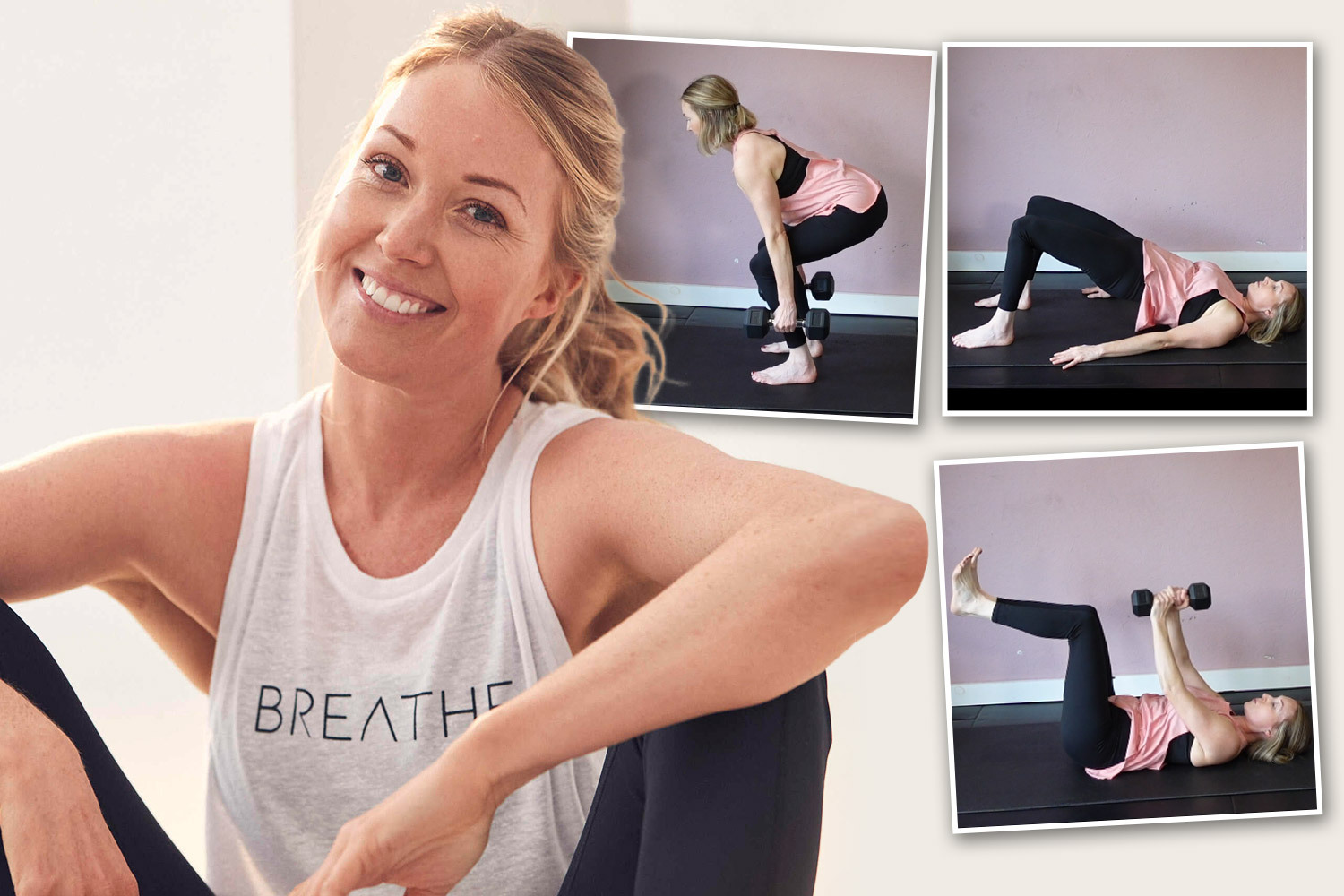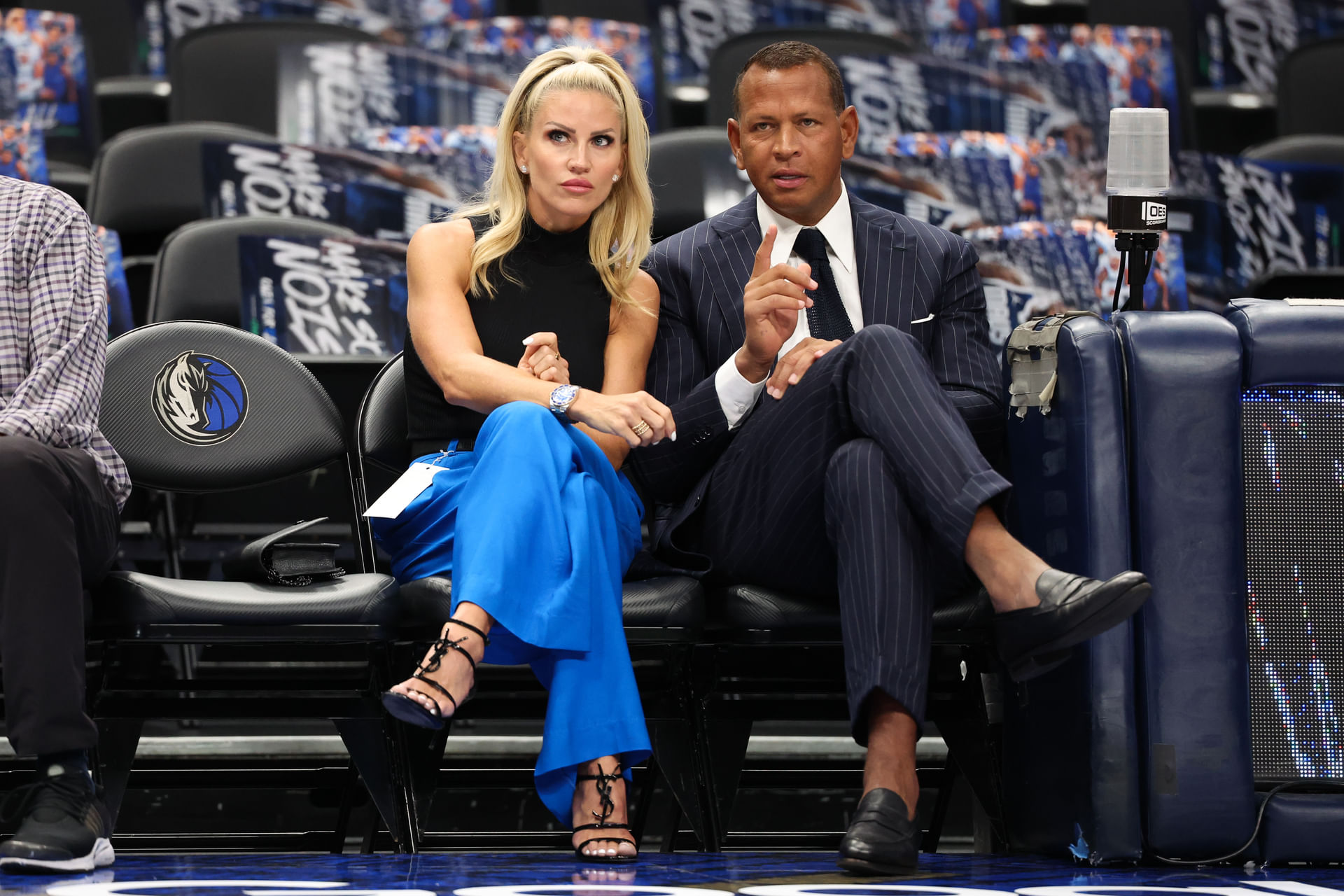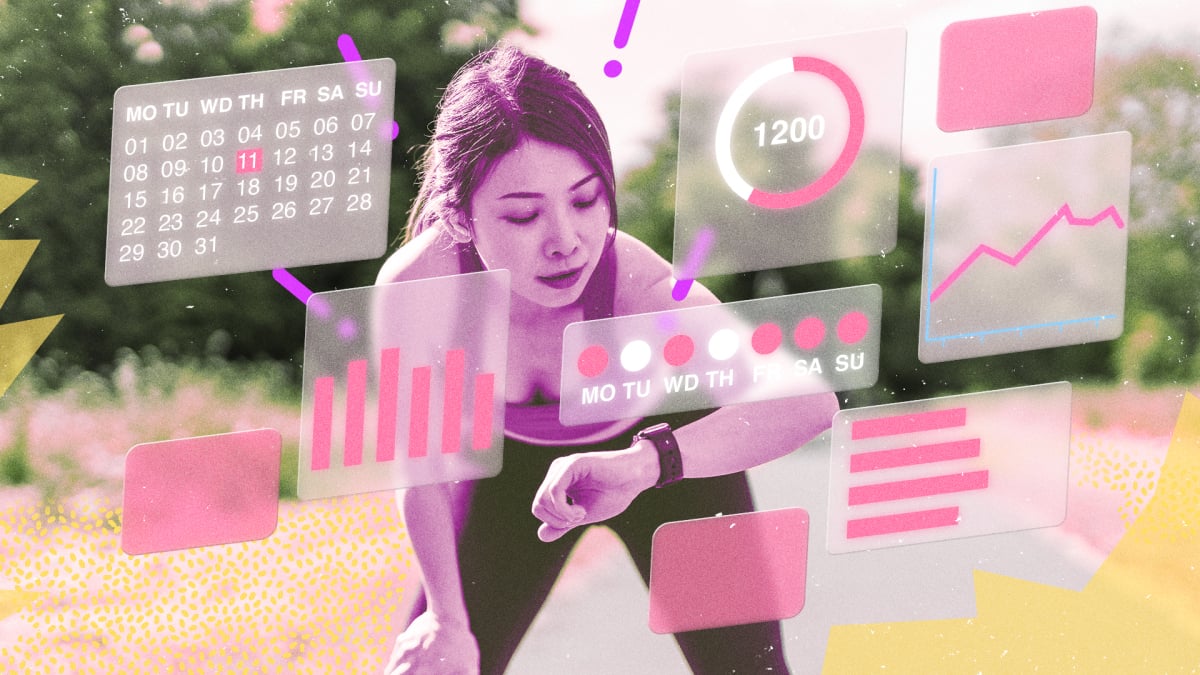AS a new mum, wrapped up in caring for a newborn, exercise if often the last thing on your mind, never mind weight loss.
So when researchers said this week that ‘new mums should do two hours of vigorous exercise per week’, it was a little jarring.
But there’s more to it than losing ‘baby weight’, said the new guidance from the Canadian Society for Exercise Physiology, written in the British Journal of Sports Medicine.
Getting back to exercise in the first 12 weeks after birth can help boost both physical and mental health, improve sleep, strengthen pelvic floor muscles, improve lower back or pelvic pain, reduce fatigue and more, analysis of research shows.
The experts suggested mums spread two hours of training over four days, incorporating aerobic and resistance training – which includes things such squats, push-ups, leg raises and planks or using gym machines.
It’s important not to stress your body too soon or before you are healed from pregnancy and childbirth.
The NHS advice states: “If you had a straightforward birth, you can start gentle exercise as soon as you feel up to it.
“If you had a more complicated delivery or a caesarean, your recovery time will be longer. Talk to your midwife, health visitor or GP before starting anything strenuous.
“Your ligaments and joints are also more supple and flexible for a few months after birth, so there’s an increased risk of injury if you stretch or twist too much.”
Nicole Chapman, a qualified PT and postnatal specialist, founder of Power of Mum, says you may get back to regular exercise sooner if you kept exercising through your pregnancy and have no postpartum problems.
But she says it’s normal to feel disconnected to your body after birth because so much has changed – including the positioning of your organs!
Nicole says if you’re hoping to lose weight, give yourself six months to a year at least – it’s not a race!
“It can take up to two years to feel physically like yourself pre-children,” she says.
Here are some ways you can get moving…
GET WALKING
Walking is probably the easiest way for mums to exercise because it’s gentle, free, and you can do it anywhere.
“It’s low impact and can promote healing but most importantly the fresh air will do wonders for your mental health especially in those early days and weeks,” says Nicole.
“Your body will let you know if you are doing too much so build up slowly.”
When it comes to the intensity or vigor of a workout, the NHS says: “It’s usually a good idea to wait until after your six-week postnatal check before you start any high-impact exercise, such as aerobics or running.”
HEAL YOUR ABS
Nicole says: “Diastasis recti occurs in all pregnancies and is literally the separation of the rectus abdominis muscles, aka the six-pack abdominal muscles, to allow for the baby to grow.
“In most cases this natural separation will come together in the first six to eight weeks after having your baby.”
Some women may have a separation for six months and longer though.
Let your diastasis recti heal, especially before doing intense workouts.
Nicole says: “Essentially diastasis just needs extra attention to deep core work. A qualified postnatal specialist can help you rather than navigating alone with sit-ups and crunches that will not help at all.”
Instead, try toe taps:
- Lie on the floor with knees bent, arms down by your sides.
- Keep your lower back against the ground.
- Exhale, raise your legs with your knees at a 90 degree bend (tabletop position). The knees should be over the hips – don’t let them come more toward your chest.
- Inhale, then keeping your knee bent, slowly lower the left foot down to the floor.
- Exhale, then return to tabletop.
- Repeat on the opposite side. Repeat 10 times each side moving slowly.
START SLOW…
A nice starting point with exercise is two to four workouts a week.
Low-impact exercise such as walking and swimming, postnatal yoga and strength training is best to begin with.
Following a plan specifically for postnatal will cater more toward your goals than a ‘bikini body ready’ guide online.
Nicole says: “Don’t underestimate the power of just 10-minute workouts in those early weeks.”
… BEFORE ADDING WEIGHT
With any exercise, increasing the demand on your body is essential for building muscle and shaping up (called progressive overload).
Nicole says: “Change happens when you challenge yourself.
“Start with bodyweight exercises just to establish that you are moving without pain and there are no underlying issues from pregnancy or labour.
“When you feel ready start adding some resistance – hand weights (dumbbells, kettlebells or gym machines) are all great but start light.
Prioritise exercises that help activate and fire up the glutes (bum) and engage the core, which will in turn help strengthen, support and stabilise the lower back.
Nicole Chapman
“Build up… progressive overload is great and important but listen out for your body giving signals if you are doing too much.
“If you are easily managing your weights for 12 plus reps with correct form and position then that is a good guide that you may be under challenging yourself.
“Prioritise exercises that help activate and fire up the glutes (bum) and engage the core, which will in turn help strengthen, support and stabilise the lower back.
“Good exercise examples include glute bridges, bird dogs, squats and planks.”
ALWAYS WARM UP
Be sure to always warm up before exercise and cool down properly after to help prevent injury.
Aches and pains in your back and shoulders, caused by postural changes due to changing, lifting, carrying and feeding your baby, are normal, Nicole says.
“But if you feel any joint pains, back pain, pelvic floor dysfunction or anything that doesn’t feel right please seek a medical advisor or women’s physio,” she says.
Prepare your workout area before you put them down for a nap. Have your weights, mat, water and video ready.
Nicole
Stretching regularly helps alleviate aches and pains.
SLEEP FIRST
As a busy mum, sleep is sacred, as Nicole says: “As a mum we know that the lack of sleep often can’t be helped. Where possible try and get more sleep.”
Lack of sleep has been proven to elevate levels of the stress hormone, cortisol.
“Cortisol plays a crucial role in mood, energy, fat loss and fat storage on the belly,” says Nicole.
“Exercise can help reduce cortisol levels. Strength training, yoga and swimming are particularly effective.”
So while exercise is important, don’t sacrifice your sleep for it – implement small amounts of exercise throughout the day, rather than exhausting workouts.
MAKING TIME
After having a baby, it’s pretty impossible to find time for yourself.
Nicole says: “This is often the biggest issue with exercise and weight loss after having a baby.
“Start the day with intent; put your workout clothes on at the start of the day, then you are ready to grab any window as it arises.
“If you are planning to workout during nap time, prepare your workout area before you put them down for a nap. Have your weights, mat, water and video ready.”
You could even multitask and turn their play into a workout for you.
Nicole: “As a baby, my daughter found it mesmerising for me to exercise in front of her whilst talking to her and often with a toy in my hand or even using my daughter as my weight when it felt safe to.”
Six exercises for a full-body at-home workout
Pullovers for upper body and core strength: 10 reps.
Lie on your back, bring your knees up to 90 degrees, core engaged. Hold a weight with both hands in the middle and start with your arms straight and above your chest. Extend your arms above your head, lowering the weight down to tap the floor behind you – or to your range of mobility. Inhale, then exhale to bring the weight back over your chest and towards your knees.
Glute bridge for pelvic floor and glute strength: 10 reps.
Lie flat on your back. Bend your knees keeping them hip-width apart. Plant feet on the floor with arms down by your side. Press through your heels, tuck your pubic bone towards your belly button, squeeze your glutes and raise your pelvis off the floor until your body forms a straight line from chin to knees, resting on your shoulders. Hold for five seconds, then lower down. Start with your body weight then hold a dumbbell on the hips when you feel ready and there’s no pain.
Suitcase deadlifts for glutes, legs, core and lower back strength: 10 reps.
Stand with your feet hip-width apart, toes facing forward. Hold a pair of dumbbells at your sides. Inhale as you lower; keeping your chest lifted, send hips back and bend at your knees. Keep weights close to your side and lower until they are ideally mid-shin. Drive through your heels and return to standing, exhaling as you do.
Side plank with rotation for core, back, shoulders, arms: 10 reps each side.
Lie on your left side with your forearm flat on the floor, bottom elbow lined up directly under your shoulder. Bend the bottom leg and rest the side of your knee on the floor. Inhale, lift hips off the floor then exhale as you start to rise bracing your core. Raise your top arm straight above you, reaching for the ceiling. Lower your arm and rotate your core as you thread your top arm through the space underneath you. Un-thread, return to the start. Keep your hips raised throughout.
Goblet squat for legs: 10 reps.
Stand with feet shoulder width apart. Cup your hands around the head of a dumbbell, place it close to your chest. Send hips back and bend at the knees until thighs are parallel to the floor. Keep chest lifted and knees driving out. Inhale as you lower. Then, push through your heels extending your legs to standing. Squeeze your glutes at the top.
Single arm bent over row for back and arms: 10 reps each side.
Take one step back with your right leg into a lunge position. Keep a soft bend in your left leg, lean slightly forward. Rest your hand on your left thigh or a stable chair. Bring your belly button in towards your spine to engage the core. With a dumbbell in your right hand lower the weight towards the floor until your arm is at full extension. Retract your shoulder blades, bend at the elbow and row the dumbbell towards the front of your hip. Pause, then slowly lower the dumbbell back down.
What about food?
Try to meal prep by batch cooking so that you have healthy meals at the ready.
“Meals like soups, stews, bolognese and casseroles can be made in large quantities and frozen in individual portions for later,” says Nicole.
For example, make a large batch of chicken and vegetable curry that will serve dinner tonight while two or three more serves can be frozen and eaten in the coming weeks.
When it comes to snacks, Nicole says think high-protein – “such as cut vegetables and hummus, fruit and yogurt or cheese slices, and whole-grain crackers with nut butter and banana”.
Protein will help to keep you fuller for longer and also help with recovery and managing weight.
Think about eating a wide variety of foods for their nutritional benefits.
The NHS says: “Aim to eat at least 5 portions of fruit and vegetables a day.
“Tinned and frozen fruit and vegetables are quick to prepare, and they count towards your 5 A Day.
“Choose vegetables that can be eaten raw, for example, carrots and celery, and snack on these between meals if you get hungry.”

















